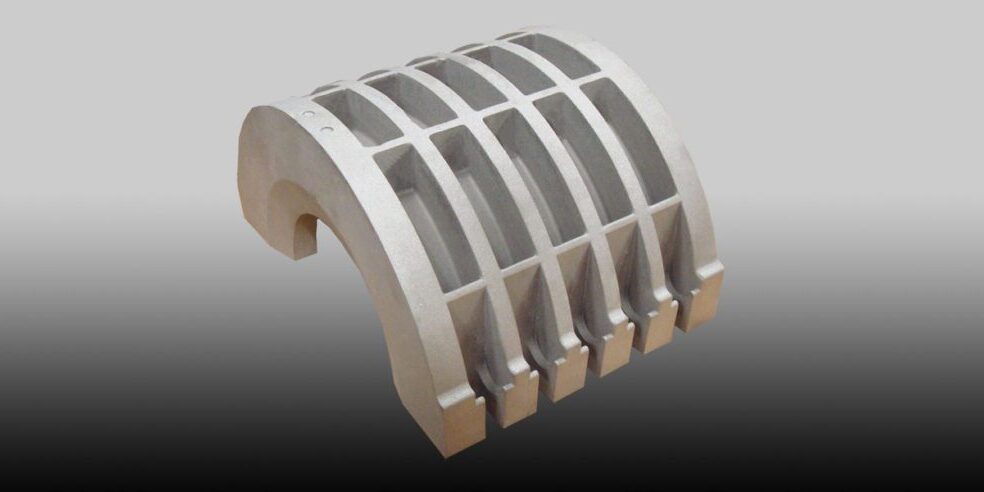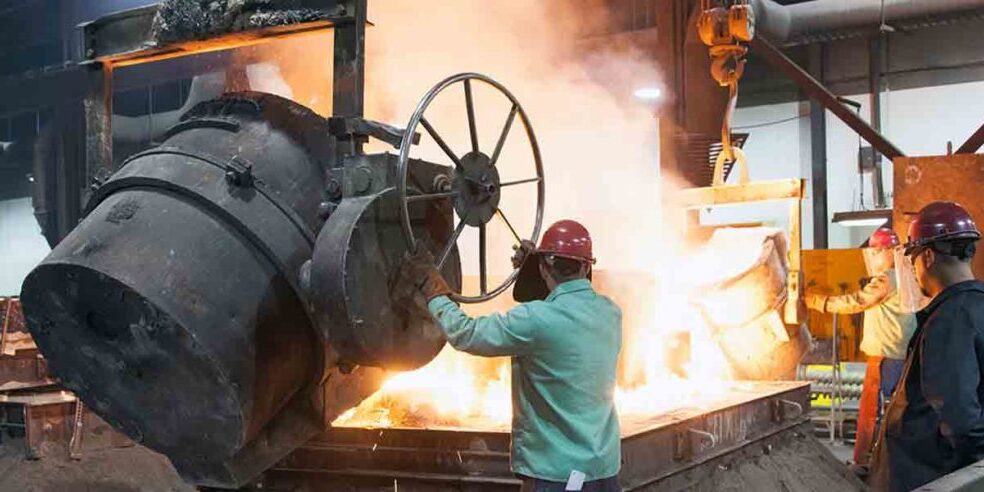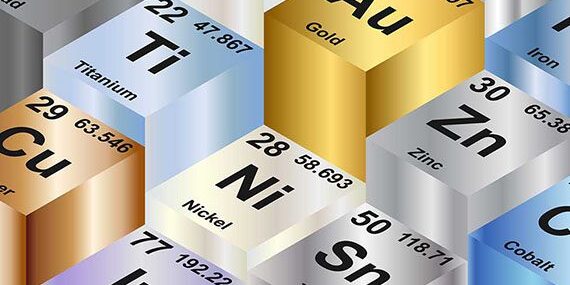Blog 10 Examples of Choosing the Right Metal Alloy for the Application | Alloy Metal
By: Dave Olsen
Sometimes particular alloys work in an application. Sometimes critical components and materials just don’t perform in a certain environment at all. There are factors like strength, resistance to corrosion, environmental temperature extremes, and many others, that help dictate which alloy metal to choose. Often a designer will select a familiar standard “workhorse” grade and keep moving, when time spent to better understand the environment and performance expectations can result in a healthier decision – one that reduces long term cost or improves performance.
Some examples where users analyzed the specific application and worked with MetalTek on selecting the correct alloy may shed some light on how that analysis provided a better material choice:
Metal Matrix Composite for Clutch Winch Drum Dramatically Increases Life
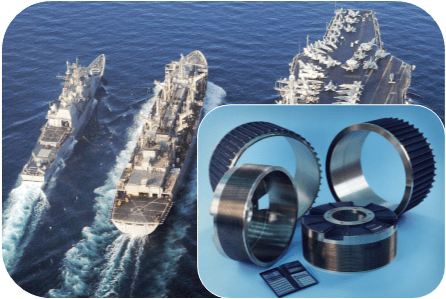
Naval supply replenishment vessels transfer equipment and supplies to military ships in service while allowing for the relative motion of the ships. They employ high horsepower continuous slip air clutches to control the tension of connecting cables between the ships to allow for motion of the seas and relative movement of the vessels. The drums became unreliable and subject to significant wear when the change to non-asbestos brake material was implemented. MetalTek pioneered the development of a Metal Matrix Composite (MMC) centrifugally cast material for use in the friction drums. The MMC material used in the drum application virtually eliminated corrosion and drum wear. In addition, reduced hourly operating cost by 90%.
Military Application Requiring High Performance and Low Weight
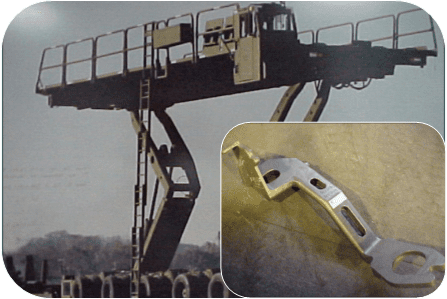
Certain military applications may bring the sometimes-conflicting demands for high strength and low weight. This would be especially true for hardware that must be readily transported by air to a remote battlefield location. The “Tunner” is an aircraft loading system for military pallets which is capable of handling single pallets of up to 60,000 lbs. (27215kg), three times the normal weight. A key element of the customer’s design was to achieve structural strength while meeting weight goals, allowing the entire system to be flown directly into remote sites on a C130 cargo aircraft. After numerous materials were considered and eliminated, the selection of 17-4PH stainless steel allowed for all goals to be met. The design complexity required numerous “box beam” components, with some areas at Class 1 quality levels. MetalTek’s Carondelet Division successfully supplied 318 system sets of radiographic quality 17-4PH stainless steel castings ranging up to 1,000 lbs. (453kg) and 14’ (4m) long for this critical application.
Bearium Solved Load and Friction Problems in Mobile Crawler
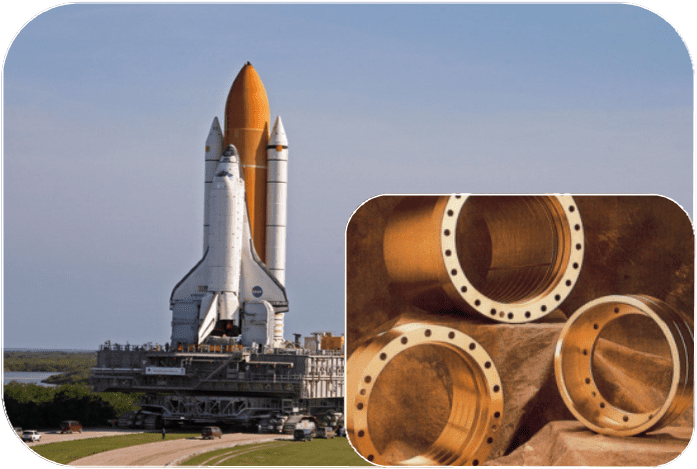
From the days of Apollo program through the Space Shuttle, a heavy-duty crawler carried the enormous weight of space vehicles down the one-mile path to the launch pad. Early designs used to carry this load were subject to sudden catastrophic failures of the roller bearings, jeopardizing the timing of the launches. The crawler went through an emergency redesign to replace the roller bearings with sleeve bearings manufactured using Bearium B-10, a high-lead bronze that is only available from MetalTek International. Designs using Bearium delivered an acceptable performance in an application that would then feature much higher friction. Heavy loads and low speeds create severe stresses on bushings and bearings. The selection of bronze alloys, including proprietary materials particularly developed and suited for this type of bushing application, has helped prevent the repeat of catastrophic failures.
High Wear Steel Mill Applications Demand Bearium
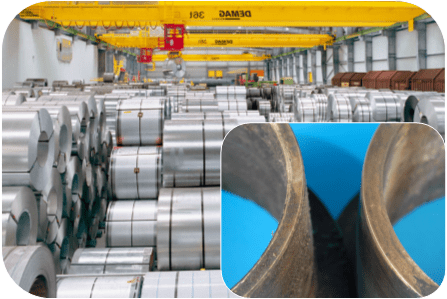
Bushings used in Steel Mill applications provide a unique combination of performance demands. The environment is abrasive, and bushings operate in a pivoting low-speed loading. Lubrication is difficult to maintain because of the high temperature. To address this environment, maintenance management at a large steel mill selected the proprietary high wear alloy Bearium B-10 from MetalTek. To verify that the Bearium was effective in this application, a comparison was done to alternate alloys used in the same application. The Bearium bushing demonstrated significantly less wear than other alloys. Lubrication grooves in the non-Bearium part were completely worn away, while those grooves in the Bearium were intact. Bearium’s ability to operate with very low lubrication addressed that problem, and the customer eliminated a significant maintenance headache.
The Right Alloy Extends Product Life in DRI Production
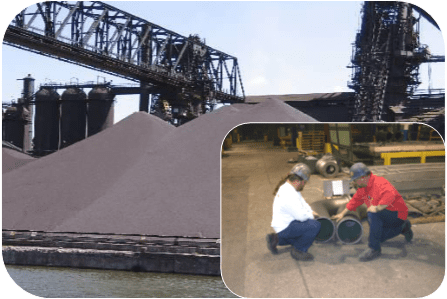
The Direct Reduction of Iron (DRI) process uses hydrogen to reduce iron, usually pellets, from Fe2O3 to FeO in a reactor. The reduced pellets are melted to produce steel. The DRI process uses stainless steel reformer tubes and fittings to produce hydrogen and in the reactor’s gas pre-heater. In some pre-heaters, metal dusting, or carburization, was causing premature failure of tubes and elbows due to reactor exhaust gas. MetalTek had witnessed and helped solve a similar metal dusting condition for a hydrogen reformer customer in Chile. Applying that experience, MetalTek suggested a material change to a more carburization resistant 35 chrome, 45 nickel microalloy. The customer tested the alloy in their preheater furnaces, approved, and adopted it. Furnace coils that previously had to be replaced on a regular basis, now operate for many years with little or no metal dusting.
AMS 4880 Alloy for High Wear Bushings and Sleeves
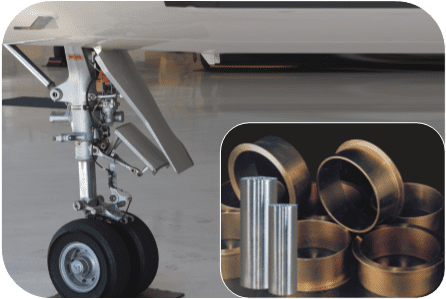
Taking off in an airplane is exciting but safely landing at your destination is the ultimate goal of flight. The landing gear is just one of the many important systems MetalTek’s aerospace customers design and builds for commercial use. Two major landing gear components are bushings and sleeves that need to withstand wear from airplanes transitioning from 140-190 MPH to taxi speeds in a matter of seconds. MetalTek’s onsite metallurgical group recommended changes to their customer’s specifications to use continuously cast components made of AMS 4880, a nickel aluminum bronze (NAB) alloy, which met the component’s wear demands and offered attractive cost savings over forged material. Availability and fast turnaround of landing gear components is a must, to complete maintenance and repairs quickly. MetalTek’s extensive stock inventory of rectangular, hollow, and solid AMS 4880 enables delivery of bushings, sleeves, and many other shaped parts fast. With less material to machine away, additional cost and time savings are realized. Not only are MetalTek’s manufacturing processes certified to ISO 9001, Nadcap, AS9100, and many others, we have been supplying quality continuous cast parts for over 40 years, which makes us a preferred landing gear supplier.
The Right Alloy Reduces Galling and Wear
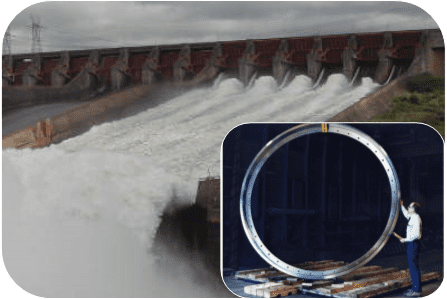
Seemingly commonplace, material selection in applications like hydro wear rings goes a long way towards delivering long-term performance by installing materials that work with mating parts. Increases in efficiency of hydro turbines used to generate electricity have placed greater demands on construction materials. Hydro engineers have upgraded their demands for materials that resist wear and cavitation/erosion. Additionally, the galvanic compatibility of mating parts including seal rings and stainless-steel impellers must be managed. To address these issues, MetalTek has recommended the use of aluminum bronze and Nitronic 60 stainless steel in mating parts. Because of the dissimilar surface film that aluminum bronze forms, it has outstanding resistance to galling and wear when mated with stainless steel. In addition, the exceptional dimensional stability delivered by rings produced using the centrifugal casting process makes it the product of choice for hydro wear ring applications.
Bi-Metal Casting Provides Unique Properties for Waste Disposal
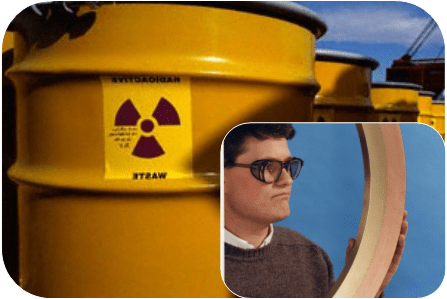
Disposal of high-level nuclear waste has long been a driving issue in power generation. Many avenues and alternative technologies have been explored. To offer other options for containers that would deliver both integrity and long life, MetalTek devised and produced developmental castings for canisters that were cast of both aluminum bronze and copper. The high-strength aluminum bronze in the inner core provided the strength needed to ensure the integrity of the canister, and the pure copper outer shell, supplied a protective cover for long term storage. MetalTek engineering was able to demonstrate that there was a solid metallurgical bond between the two metals. Manufacturing using the centrifugal casting process eliminates metal forming, seams, and welds – another example of the ability to combine materials and processes to address demanding applications.
Large Bronze Bushings—Helping Our Customer’s Customer
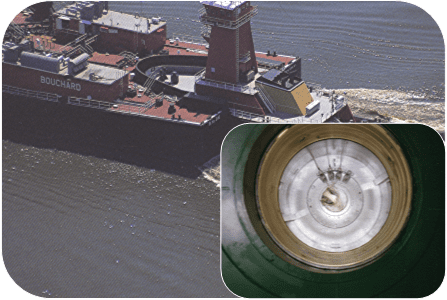
The manufacturer of barge coupling systems had a better idea. By designing the traditional barge interlock system differently, tugboats so quipped could operate faster, work in rougher seas, and provide fail-safe locking between tug and barge. When the manufacturer needed a high-quality large diameter bushing material capable of working in saltwater for the new design, they came to MetalTek’s Wisconsin Centrifugal Division. Working together, the companies developed large 52” (1321mm) O.D. nickel aluminum-bronze bushings to provide the quality needed to maintain the positive locking. A temper anneals heat treat operation on the nickel aluminum bronze bushings prior to machining to further enhance corrosion-resistant operation in saltwater. For large bronze applications, MetalTek had the answer.
Alloys for Fusion Power
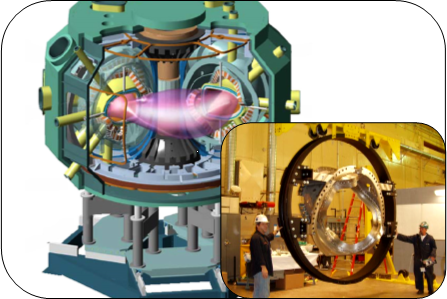
International efforts for the past 50+ years have focused on the potential to generate power by fusion. The research includes the development of various versions of a Stellarator, a device that uses intricate, twisted magnetic fields to manage plasma flow at extreme temperatures. The unique shaping and temperature demand on the winding form used to contain the complex magnetic field necessitated new alloy and process development. MetalTek independently developed a proprietary stainless-steel alloy that excels in the extreme cryogenic environment of 77°K (-321°F/-196°C). A critical feature of that alloy development includes the ability to produce the 13,000 lbs. (5897kg) casting without a water quench, which avoids the related dimensional distortion that can result. Ongoing testing has further demonstrated the superiority of the alloy in this environment. MetalTek has supplied multiple components for this important and exciting research.

